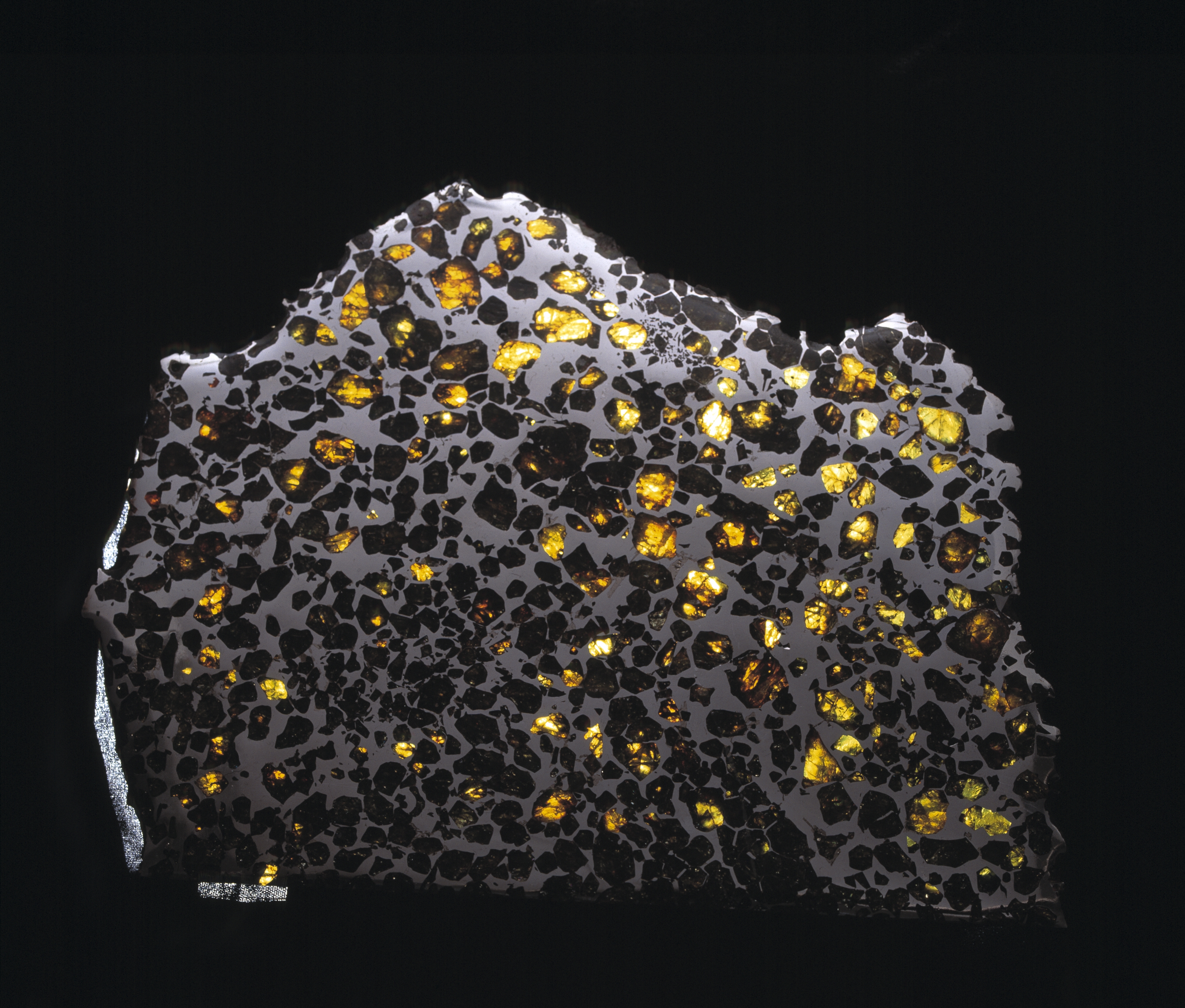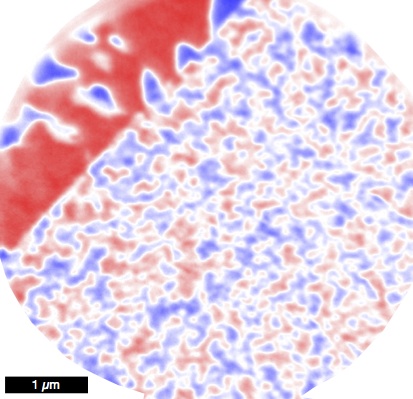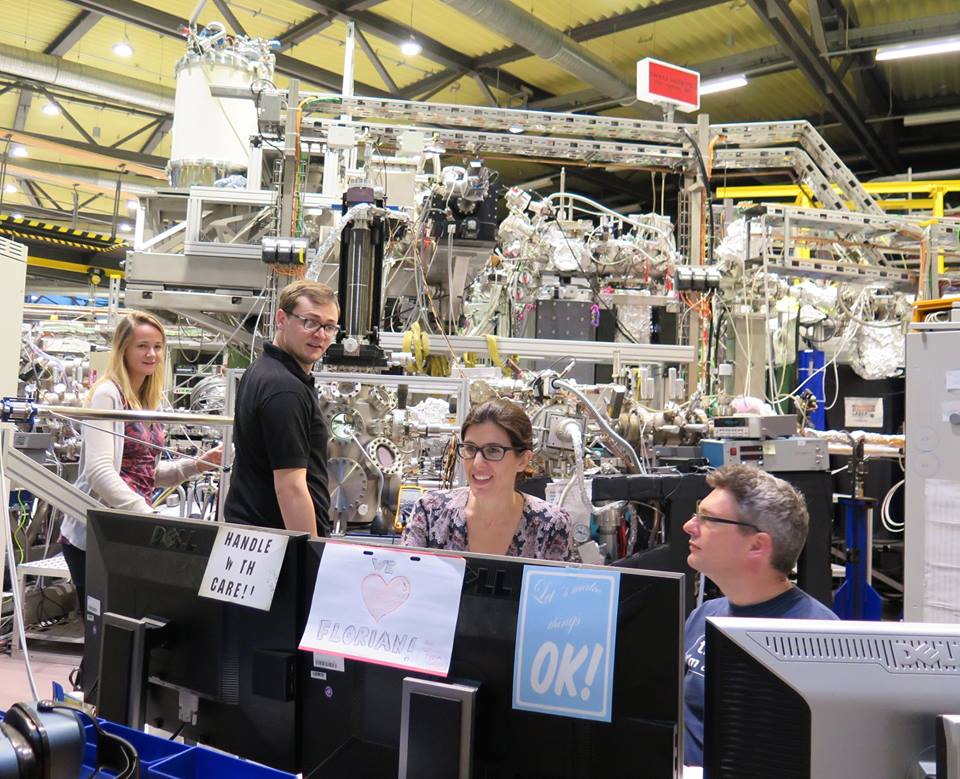Meteorites reveal long-lived magnetism in the early Solar System

Image of the Esquel Meteorite. This meteorite consists of gem-quality olivine embedded within an Fe-Ni matrix. © The Trustees of the Natural History Museum, London
Today, only a handful of the terrestrial bodies in our Solar System (those composed predominantly of rock and metal, i.e. asteroids, moons and the inner planets) generate their own magnetic fields. The Earth and Mercury are the only two planets, Ganymede and possibly Io are the only moons, and none of the asteroids that have been measured generate a magnetic field. However, this doesn’t appear to have been the case ~4.5 billion years ago, when the solar system was still young. The meteorite collection on Earth contains samples from many of the asteroids present during this time, and paleomagnetic measurements of these samples reveal that many carry a magnetic remanence, implying that their parent asteroids generated a magnetic field. A planetary magnetic field requires the convection of molten metal within the planetary core, and previous paleomagnetic measurements of meteorites have been used to argue for the existence of such cores within small planetary bodies. However, beyond this fundamental inference, we don’t know much about ancient core convection within asteroids. For example, we don’t know how or why these cores convected or even how long this process lasted. Liquid core convection and magnetic field generation on the Earth at the present day are the result of inner core solidification, but whether this process could have generated fields in small bodies (which have relatively low internal pressures) is uncertain. It is widely believed that thermal gradients within asteroid cores were capable of powering convection, but this mechanism is inefficient and, therefore, likely only generated magnetic fields during the first ~10 million years of the Solar System. Our new study, published today in Nature, suggests that small bodies could also generate fields through compositional convection from core solidification, which has far-reaching implications for the thermochemical evolution of the bodies present during the early Solar System.
This project started in 2012, when the NPM team (with collaborators from Denmark, Germany and Spain) began investigating the magnetic properties of the cloudy zone (CZ), a nanoscale intergrowth that forms within meteoritic metal. Two papers published in 2014 assessed the reliability and feasibility of the CZ as a paleomagnetic recorder, and found that this intergrowth had the potential to record a time-resolved record of the field generated by the parent body as it cooled. Based on these observations, we chose to study the CZ within two of the pallasite meteorites (the Imilac and Esquel meteorites). These striking meteorites consist of cm-sized olivine crystals embedded in a matrix of Fe-Ni metal. Due to the presence and proximity of silicate and metallic phases, these meteorites were thought to originate from the core-mantle boundary of an asteroid, however recent paleomagnetic evidence suggests that they originate from the upper mantle of a ~200 km radius body and formed as a result of impacts between asteroids during the early Solar System.
Building on our pioneering work on the Tazewell IIICD iron meteorite, we went to the BESSY II synchrotron in Berlin to image the nanomagnetic structure of the CZ in the Imilac and Esquel pallasites. This experiment involved firing high-energy, circularly polarised X-rays at the surface of our samples and measuring the number electrons that are driven from the sample during the resulting excitation. This number depends on the orientation of the local magnetic moment of the sample surface, so by spatially resolving the emitted electrons, we are able to image the magnetic domain pattern of the CZ. From these images we can observe any bias in the directions of the remanence carriers within the CZ, which we can then relate to both the intensity and direction of the field experienced by the CZ as it formed.

XPEEM image of the tetrataenite rim and cloudy zone. Blue and red correspond to positive and negative projections of the magnetisation onto the X-ray beam.
Back in Cambridge, we started to measure this bias in the CZ of both meteorites and noticed some interesting trends. In the Imilac meteorite, the bias was fairly consistent across the age variations in the CZ. On the other hand, the extent of the bias decreased as the age of the CZ decreased in the Esquel meteorite. Using a newly-developed modelling procedure, we were able to determine quantitative estimates of the field strength and direction from these measures of bias. We found that the field recorded by the Imilac meteorite was roughly constant in both intensity and direction during a ~8 – 10 Myr period. In contrast the field intensity recorded by the Esquel meteorite decreased from ~80 µT down to a plateau of ~30 µT before decreasing further to ~0 µT over a similar time period.
Working with our collaborator from California, we combined a model of planetary cooling with cooling rates measured from the size of the features in the CZ to determine that both meteorites recorded the magnetic field during the period of core solidification. The model predicts that the Imilac and Esquel meteorites captured the early and late stages of this process, respectively. At this time, the latent heat generated by core solidification would have been sufficient to inhibit thermal convection of the core liquid, so the recorded field cannot originate from this mechanism. Instead, the field could be generated by compositional convection resulting from the rejection of light elements from the growing solid inner core.
To test this hypothesis, we used empirical relations between various magnetohydrodynamical fluid properties to predict the field generated by compositional convention on the pallasite parent body. We predict that the field recorded by the Imilac meteorite should be unidirectional, relatively strong and gently decrease across the time period sampled experientially. The Esquel meteorite is predicted to capture a dipolar-multipolar field transition, multipolar regime, and eventual shut-down on dynamo activity core solidification completed. This trend should be manifested as an initial decease in field intensity, followed by a plateau at a relatively weak value, and finally a decrease down to 0 µT. Both of these predicted trends agree well with those measured experimentally, allowing us to conclude that the recorded field is consistent with compositional convection.
To date, compositional convection has not been related to paleomagnetic measurements on small planetary bodies. It has been hypothesised that this type of convection would have been a very efficient mechanism of generating magnetic activity on these bodies. On the other hand, the thermally driven convection that is thought to have acted on these bodies is inefficient, so was likely short-lived (acting during the first ~10 Myrs of the solar system). Given that we have shown that compositional convection can act on small bodies, its proposed efficiency likely means that it acted across the majority of differentiated examples of these bodies that solidified from the bottom-up (from the centre, to the core mantle-boundary). Hence, a widespread, intense, and long-lived epoch of magnetic activity likely existed among many small bodies during their period of core solidification (10s to 100s of Myr after the formation of the solar system).


Leave a Reply